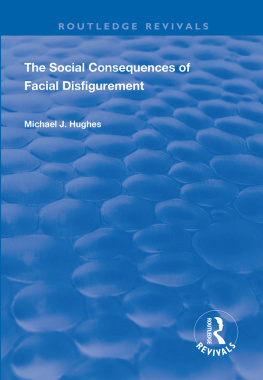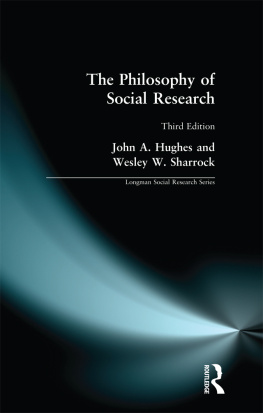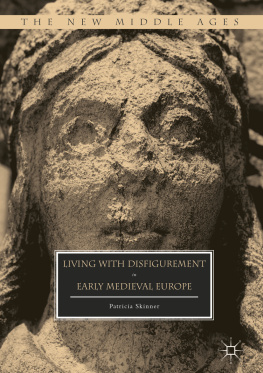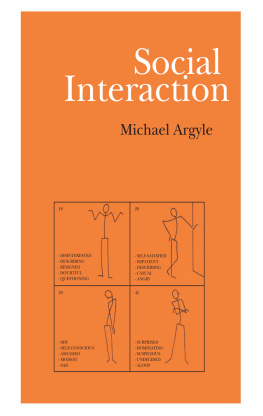First published 1998 by Ashgate Publishing
Reissued 2018 by Routledge
2 Park Square, Milton Park, Abingdon, Oxon, OX 14 4RN
711 Third Avenue, New York, NY 10017, USA
Routledge is an imprint of the Taylor & Francis Group, an informa business
Copyright M. J. Hughes 1998
All rights reserved. No part of this book may be reprinted or reproduced or utilised in any form or by any electronic, mechanical, or other means, now known or hereafter invented, including photocopying and recording, or in any information storage or retrieval system, without permission in writing from the publishers.
Notice:
Product or corporate names may be trademarks or registered trademarks, and are used only for identification and explanation without intent to infringe.
Publishers Note
The publisher has gone to great lengths to ensure the quality of this reprint but points out that some imperfections in the original copies may be apparent.
Disclaimer
The publisher has made every effort to trace copyright holders and welcomes correspondence from those they have been unable to contact.
A Library of Congress record exists under LC control number: 97077383
ISBN 13: 978-1-138-36018-1 (hbk)
ISBN 13: 978-1-138-36019-8 (pbk)
ISBN 13: 978-0-429-43326-9 (ebk)
People who are facially disfigured are often considered not quite whole, not quite normal, or not quite acceptable. How do they experience reactions to their disfigurement? Do they feel disadvantaged? If so, how do they compensate? How do professional people such as doctors, nurses and social workers try to help them? How could that help be improved?
These are the basic questions underlying the present study. The face is important in the formation and maintenance of human relationships. This is illustrated by the many verbal expressions involving the word face which occur in everyday language - losing face, facing up to it, two-faced, and about face, for example. Literature too abounds with references to the face; the Penguin Dictionary of Quotations lists 64 well-known citations, from the cataclysmic consequences of the face that launched a thousand ships to the private anguish of Blake when speaking to his patron Thomas Butts about his own distinctive appearance:
O! why was I born with a different face?
Why was I not born like the rest of my race?
The face is exposed, unlike many other parts of the body, and constitutes our preliminary mode of recognition of people. Encounters with strangers rely heavily on the impact of initial appearance. There are many studies which show that unsatisfactory first impressions will prevent people from attempting to pursue an acquaintance. Consequently, anyone who is facially impaired, either in appearance or in damage to sensory organs, is at a serious social disadvantage. Even if the audio-visual system is undamaged, facial impairment alone can inhibit communication, since much communication relies on non-verbal cues supplied by facial expression.
The effect of disfigurement may also be severe in encounters with known others, if the range of non-verbal aids to complete communication is restricted. Facial disfigurement may be accompanied by oral disfigurement, which may impede eating; given the significance of eating as a social activity, the person who feels unable or too self-conscious to eat with others sustains a further isolation.
Aims of the study
This study was established with the following aims:
To describe the nature of facial disfigurement, and the characteristics of those who are disfigured;
To describe the causes of disfigurement and deformity;
To investigate the social consequences of facial disfigurement;
To understand the means which people adopt to overcome the difficulties posed by disfigurement - people who are disfigured, and those who endeavour to help them;
To describe the physical, social and psychological consequences of professional intervention;
To discover what further can be done by professionals to mitigate the effects of disfigurement and deformity.
Origin of the study
My interest in the subject first began when I was principal social worker at the Royal Victoria Infirmary in Newcastle upon Tyne. The chief maxillo-facial technician at the hospital, the person responsible for making artificial parts of the body - from false teeth to false ears - raised the issue of emotional support for people whose face had been mutilated by illness or trauma. Previously I had assumed that his role was restricted to the sculpting of acceptable replacement parts for the body, but he was able to show in many instances that those for whom he worked had no other form of human support; they were very isolated people, and he was sometimes the only source of encouragement for those whose clinical needs had abated and who required much less attention from surgical staff than previously. I met some of the people with whom and for whom he worked, and was impressed by the extent of their physical mutilation, but more than that by their strong need for support and encouragement - an elderly man whose face had been eroded by a progressive malignancy, a young man whose ear had been lost in a fight, an elderly woman whose nose had been removed because of cancer - they presented cogent evidence that here were hidden personal needs and difficulties; they were hidden because in every instance a withdrawal from social interaction was described, and on the whole these needs were not being met satisfactorily.
This then was the beginning of my interest and concern, which have instigated and motivated this research.
Language
Two aspects of language need to be mentioned here. The first is the use of the words disfigured and deformed. Although the social consequences of disfigurement and deformity may in a general sense be similar, the two concepts are distinct, and throughout this work will be used in a precise and consistent way.
Deformity refers to a condition which is in some sense congenital; the condition, or predisposition to the condition, will have been acquired by the time of birth. This may simply be a slightly unusual feature, such as a large nose, or ears which stick out; it may be a severe congenital syndrome of physical characteristics, such as Aperts syndrome, or it may be a syndrome which has amongst other things some physical attributes, such as Downs syndrome. Some may find the expression deformity unacceptable, since they feel that it stigmatises the individual. No such stigma is intended by the term, which literally does refer to a variation from the appearance of the majority. Any stigma associated with the term arises from its inappropriate use as a means of excluding or ridiculing people.
Disfigurement, on the other hand, refers to a condition which has been acquired since birth, through some means other than congenital.
This is likely to be, broadly, through a physical trauma or through illness. Trauma will include injury through burns, cuts and mutilation (through fights or road traffic accidents, for example). The principal illness which occasions facial disfigurement is cancer, and much of this study, particularly the field study, concentrates on this source of disfigurement.
The title of the thesis refers only to disfigurement, but issues concerning congenital deformity are also addressed, particularly in the review of literature.
The second point which must be considered and explained at this point is the expression plastic surgery. This does not refer to the materials used, but rather to the earlier meaning of the word plastic, used to describe a process of moulding and shaping. This is exactly what is required in the modifying and rebuilding of the face, and plastic surgeons are also concerned with the shaping of other parts of the body. Reconstructive surgery is one element of this. A further element is cosmetic surgery, which refers to intention as much as technique; it is used to denote facial modification where previously there had been no serious abnormality, as in the case of those who wish to eliminate the signs of ageing, or those who aspire to perfect appearance, or those who wish to remove fatty tissue.












